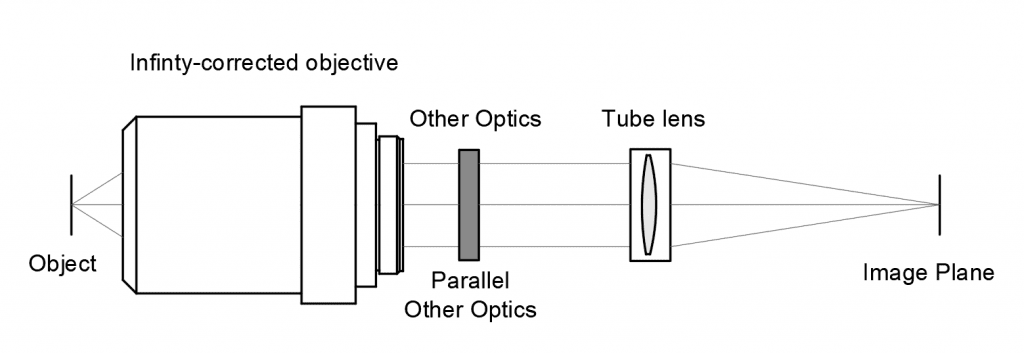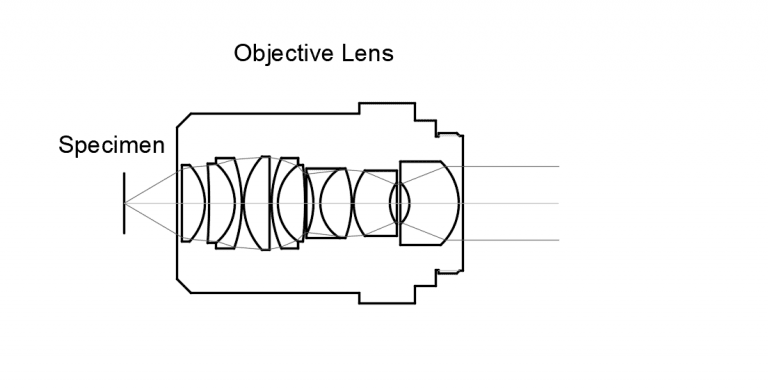Key Takeaways
- Microscope objectives, comprising objective lenses, vary in their numerical aperture (NA), which dictates their light-gathering ability and resolution.
- Magnification options of microscope objectives influence the field of view and resolution of the images produced.
- Working distance, the distance between the objective lens and the specimen, is crucial for positioning objects accurately.
- Choice of immersion medium, whether dry or immersion objectives, impacts resolution and NA, affecting image quality.
Key Considerations for Selecting Microscope Objectives
Microscopy systems find applications in diverse fields of scientific research, industry, and laboratory work. At the heart of these systems lie the objective lenses, composed of multiple lens elements and positioned closest to the specimen. Choosing the right microscope objective is crucial, as it directly impacts the quality of the images produced while keeping the cost reasonable. In this article, we will explore the key considerations involved in selecting the ideal microscope objective.
The Crucial Conjugate Distance
A significant factor to contemplate is the conjugate distance. Objective lenses are available in two primary types: finite conjugate distance and infinite conjugate distance. The former generates images of specimens independently, without the need for a secondary lens. For simple microscopy systems, a finite conjugate objective, depicted in Figure 1, presents an excellent and cost-effective choice.

On the other hand, infinite-corrected objectives prove ideal for research-grade biomedical and industrial applications, particularly when additional components like filters, dichroic mirrors, and polarizers are necessary in the microscopy system. Integrating optical plate components in the infinity space, as illustrated in Figure 2 (labelled as “Parallel Optical Path”), between the infinity-corrected objective and tube lens avoids introducing spherical aberration or altering the objective’s working distance.

The Significance of Numerical Aperture (NA)
The numerical aperture (NA) stands as a pivotal parameter of a microscope objective. It measures the objective’s capacity to gather light and essentially determines the resolution of the microscopy system.

Expressed as NA = n × sinθa, where θa represents the maximum 1/2 acceptance angle of the objective, and n denotes the index of refraction of the immersion medium, NA plays a vital role in resolving closely spaced Airy disks. The resolution (r) of the objective is given by λ/(2NA), where λ symbolizes the imaging wavelength. A higher NA translates to superior objective resolution, enabling finer distinctions in the images.
Magnification Matters
Objective lenses serve to magnify images, making magnification a crucial parameter to consider alongside numerical aperture. Magnification options typically span from 4X to 100X. The field of view of a microscopy system changes with the magnification of the objective lens, as the image sensor size or observed area through the eyepiece remains fixed. Lower magnification objectives yield a larger field of view but lower resolution, whereas higher magnification objectives provide a smaller field of view but higher resolution.
The field of view’s diameter can be calculated using the formula FOV = FN/Mag, where FN signifies the field number in microscopy, representing the diameter of the observable area through the eyepiece or image sensor.
The Crucial Working Distance
Working distance (WD) refers to the distance from the objective’s front lens element to the focused object. For scientific research applications, such as atom trapping and fluid sample analysis requiring object placement within a chamber, objective lenses with long working distances are necessary. Placing the observed object on the designated object plane is especially critical for objectives with high NA to maintain optimal resolution.
Selecting the Right Immersion Medium
The choice between dry and immersion objectives depends on whether a liquid medium is required between the specimen and the objective lens. Dry objectives operate with air as the medium, while immersion objectives necessitate a liquid medium to occupy the space between the object and the objective’s front element, enabling higher NA and resolution. Figure 4 showcases an oil immersion objective, which collects more light (higher NA) compared to a dry objective.
Common immersion media include air, water, oil, and silicone. Opting for an objective designed for the appropriate immersion medium ensures higher resolution images.
Aberration Correction for Optical Precision
The optical aberration correction of an objective lens significantly influences its optical performance. Five primary types of objective lenses exist based on the degree of aberration corrections: Achromat, Plan Achromat, Plan Fluorite (Plan Semi-Apochromat), Plan Apochromat, and Super Apochromat. Choosing an objective with the correct aberration correction level facilitates the construction of a microscopy system within a reasonable budget.
Conclusion
At Avantier Inc., we offer a diverse range of objective designs, each providing varying degrees of optical aberration corrections to meet specific needs. For instance, achromatic objectives serve as cost-effective options for laboratory microscope applications, while long working distance apochromats suit biological and scientific research applications. Our expertise enables us to help you select or design the perfectly corrected objective lens for your specific application requirements.
Please contact us if you’d like to schedule a consultation or request for quote on your next project.
GREAT ARTICLE!
Share this article to gain insights from your connections!




